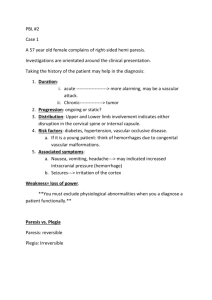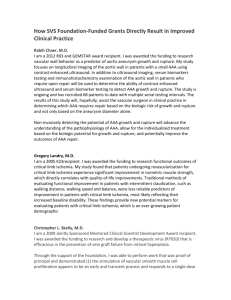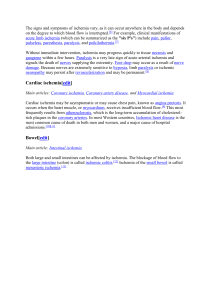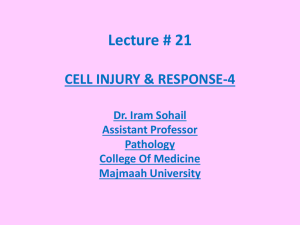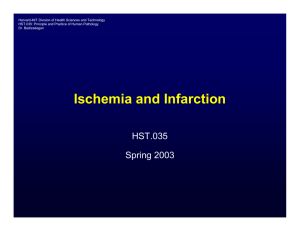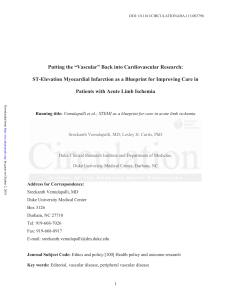Common Vascular Problems in Primary Care Ischemic Ulceration Critical Limb Ischemia
advertisement
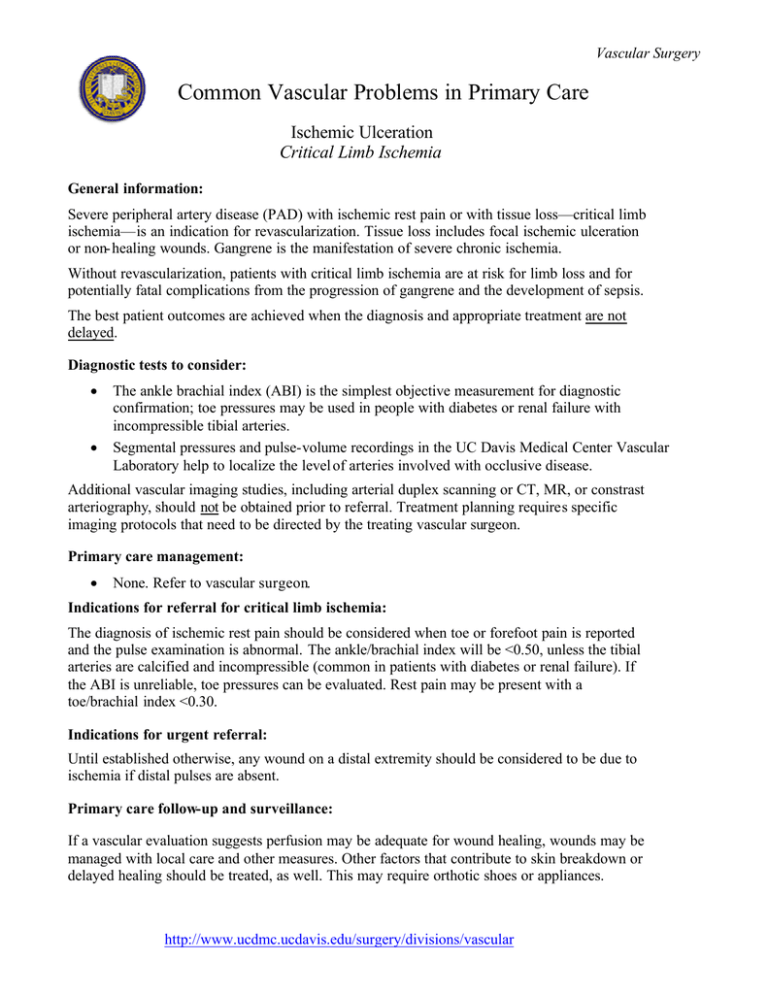
Vascular Surgery Common Vascular Problems in Primary Care Ischemic Ulceration Critical Limb Ischemia General information: Severe peripheral artery disease (PAD) with ischemic rest pain or with tissue loss—critical limb ischemia—is an indication for revascularization. Tissue loss includes focal ischemic ulceration or non- healing wounds. Gangrene is the manifestation of severe chronic ischemia. Without revascularization, patients with critical limb ischemia are at risk for limb loss and for potentially fatal complications from the progression of gangrene and the development of sepsis. The best patient outcomes are achieved when the diagnosis and appropriate treatment are not delayed. Diagnostic tests to consider: • • The ankle brachial index (ABI) is the simplest objective measurement for diagnostic confirmation; toe pressures may be used in people with diabetes or renal failure with incompressible tibial arteries. Segmental pressures and pulse-volume recordings in the UC Davis Medical Center Vascular Laboratory help to localize the level of arteries involved with occlusive disease. Additional vascular imaging studies, including arterial duplex scanning or CT, MR, or constrast arteriography, should not be obtained prior to referral. Treatment planning requires specific imaging protocols that need to be directed by the treating vascular surgeon. Primary care management: • None. Refer to vascular surgeon. Indications for referral for critical limb ischemia: The diagnosis of ischemic rest pain should be considered when toe or forefoot pain is reported and the pulse examination is abnormal. The ankle/brachial index will be <0.50, unless the tibial arteries are calcified and incompressible (common in patients with diabetes or renal failure). If the ABI is unreliable, toe pressures can be evaluated. Rest pain may be present with a toe/brachial index <0.30. Indications for urgent referral: Until established otherwise, any wound on a distal extremity should be considered to be due to ischemia if distal pulses are absent. Primary care follow-up and surveillance: If a vascular evaluation suggests perfusion may be adequate for wound healing, wounds may be managed with local care and other measures. Other factors that contribute to skin breakdown or delayed healing should be treated, as well. This may require orthotic shoes or appliances. http://www.ucdmc.ucdavis.edu/surgery/divisions/vascular

